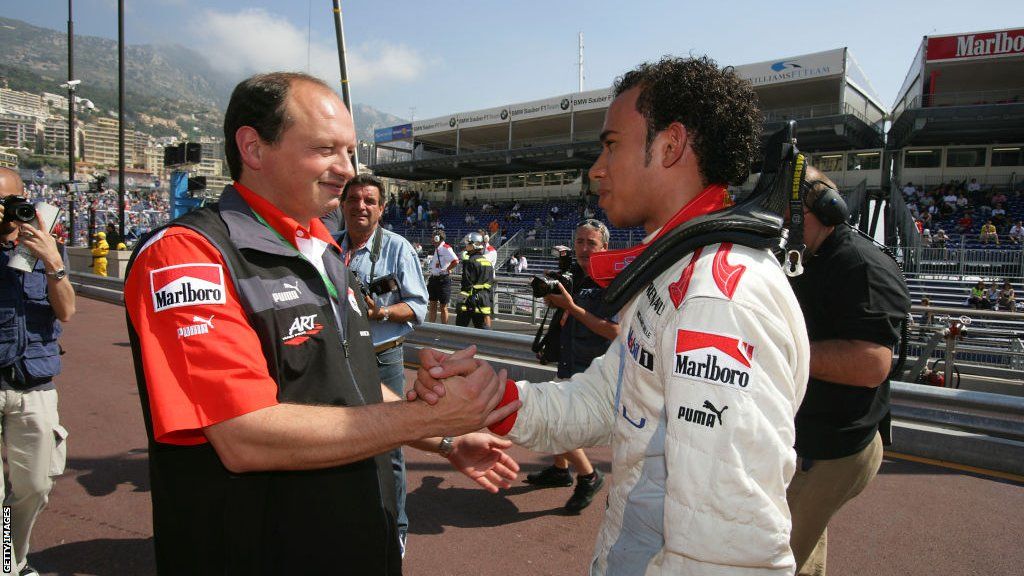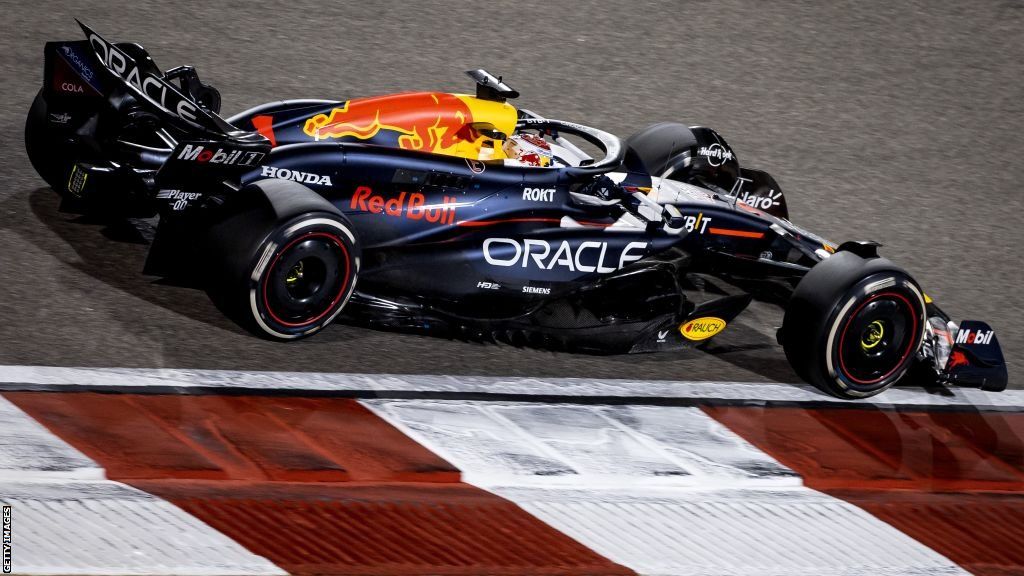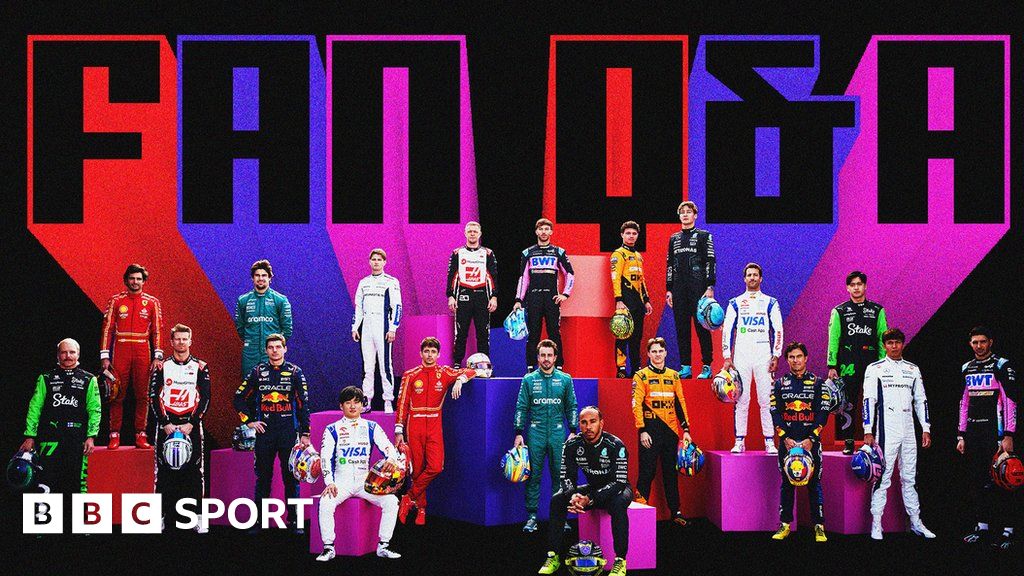
The 2024 Formula 1 season started in Bahrain at the weekend with a dominating win for Red Bull’s Max Verstappen – and we want to know what the big talking points were.
BBC Sport’s chief F1 writer Andrew Benson answers your questions.
Who are the leading candidates to take the Mercedes seat vacated by Lewis Hamilton in 2025?
Andrew: Mercedes team principal Toto Wolff has already admitted that he negotiated a shorter contract than Lewis Hamilton wanted last summer because he did not want to risk losing the rising Italian star Andrea Kimi Antonelli, who has been on the Mercedes junior driver programme for several years.
Antonelli is just 17, and is debuting in Formula 2 this season. His first race in Bahrain last weekend did not go well because his Prema team struggled at the track, but he is extremely highly rated, with many insiders regarding him as the “next Verstappen”.
If Wolff deems Antonelli not ready for graduation next season, the obvious leading candidate as a stop-gap for a year or two is Fernando Alonso, notwithstanding his difficult history with Mercedes, dating back to the 2007 ‘spy-gate’ controversy.
After that, second-tier candidates would be the likes of Carlos Sainz and Alex Albon.
Of course, if the controversy over Christian Horner ended up meaning Max Verstappen was available, then that would change things dramatically. Every team would want him – including Mercedes, of course.
Which team or driver will be the surprise package of the season?
Andrew: Hard to see any surprises right now – the field looks pretty similar in order to how it did last year, and there are no new drivers. It would be wise, as Ferrari team principal Frederic Vasseur said after the race in Bahrain, to wait a couple more races to get a sense of the true pattern of the season. Then it’s just a question of who can develop their cars faster than their rivals.
If Mercedes had given Lewis Hamilton a three-year contract with an out clause, would he have gone to Ferrari? So is he only going to Ferrari because Mercedes didn’t want him?
Andrew: That’s a question to which it is impossible to know the answer – and it’s unlikely that one will come for some years.
What we can say is that a combination of circumstances combined to make the Ferrari move a possibility. First, Hamilton’s faith in Mercedes was dented by their continuation with their flawed design philosophy into 2023, when he had been pleading with them to abandon it. That left him with a car that felt just like it had the previous year.
Second, Hamilton was less than impressed by being offered a short-term contract as if he was being treated as a stop-gap for Antonelli.
That made the ground fertile for an approach by Ferrari. And chairman John Elkann and particularly team principal Frederic Vasseur pulled a masterstroke in making an offer that convinced Hamilton to jump, including a longer-term deal and significantly more money.
Vasseur was key in this – Hamilton has been effusive in his praise of the Frenchman, with whom he worked successfully in the junior categories. That must hurt for Wolff, who seemed to have carved such a close relationship with Hamilton over the past decade.

Agree with the budget cap etc or, like me, would you like to see the teams have free reign and be allowed to ‘spend what they want’ again?
Andrew: It’s not for me to judge. What I can tell you, though, is that no-one in F1 wants to return to the days of unrestricted spending. It has given all the teams the chance to become profitable businesses – although teams such as Williams are still losing money as they invest in bringing their infrastructure up to the levels of the top teams.
There is an argument that the budget cap locks in an advantage for teams for a season, because it prevents teams spending their way out of underperformance, as McLaren and Mercedes have done in years gone by.
But the aerodynamic testing restrictions – which are a sliding scale of permitted aerodynamic research with the least successful team permitted the most and the most successful the least – should take care of that over time. At least that’s the theory.
What are the logistics of moving people and equipment around the world for 24 races? It is a staggering feat of organisation in itself.
Andrew: F1 has created a finely honed system, combining sea and air freight, that moves large blocks of equipment around the world together, and negotiated smooth passages through customs in most countries – even if there are still occasional hiccups in places such as China.
It is indeed a staggering feat of organisation.
After that, in the more immediate sense, personnel travelling to races – often with late arrivals of car upgrades – is done through a combination of scheduled and private jets. In Europe, cars are taken from race to race, and back to the factories, in trucks.
Are we in for another season dominated by one driver?
Andrew: Yes, it rather looks like it.
Andretti have sadly been blocked from running a team in the near future. Could they put in a bid to buy Haas, for example, and join?
Andrew: They could – but there is no indication that owner Gene Haas wants to sell; quite the opposite, in fact. Andretti has already tried to buy Sauber – and came close to a deal a couple of years ago before it collapsed at the 11th hour.
That option has now closed because Audi now owns Sauber ahead of its works entry in 2026.
Andretti’s only option to enter F1 before 2028 – when F1 has said it will look again at his bid if General Motors has built its own engine – is to buy a team. The obvious candidate right now is Alpine, the purpose of which many in F1 question. But again, like Haas, there is no indication yet that Renault is willing to sell.
If Mercedes adopted the zero-pod design and failed, why have Red Bull adopted it? Unlike Mercedes, can Red Bull make it work?
Andrew: I’m afraid this question is based on a fundamental misunderstanding of the new Red Bull. Despite what you may have read in certain places, it is not a re-versioning of the Mercedes zero-sidepod design. Quite the opposite; it is an aggressive evolution of their own philosophy pioneered in 2022.
If you doubt that, Mercedes technical director James Allison was asked a similar kind of question in Bahrain last weekend. He gave the following withering response: “Which ideas do you think they have borrowed?” Before going on to make it clear he did not agree with the premise.
The principles of the new Red Bull are the same as those of its predecessors – a heavily undercut sidepod to provide the best possible airflow to the central floor edge, to scavenge air out of the underfloor there, and to the top of the diffuser, to create a low-pressure area to do the same there.
All that’s happened this year is that the undercut is even bigger than before. But the sidepod is still very much there. Yes, the Red Bull has a couple of vertical air inlet slats, and the old Mercedes had a much larger vertical entry on its zero-pod car, whereas most cars use high-mounted horizontal inlets. But they are about pursuing the Red Bull philosophy further, not adopting the Mercedes one.

Following from Kenya, is there any chance of f1 ever getting staged in Africa?
Andrew: F1 is very keen on a race in Africa, it’s just proving a little tricky to organise at the moment. Attempts to revive Kyalami in South Africa faltered in the last year or so. A number of other projects have been mooted but there is no serious contenders just yet.
Just what went wrong at Alpine over the winter?
Andrew: Good question. Alpine ended last year sixth in the championship and have started this year with basically the slowest car on the grid.
The simple answer is that it is overweight and lacks downforce, as well as having the least powerful engine on the grid.
The question is, why?
Alpine’s claim is that they have adopted a whole new design philosophy and it will take them a while to get it right, but that still begs the question ‘why?’, if it is going to work, the car is not faster than it is.
The simple truth is that other teams have made more progress than Alpine have. And that’s the brutality of F1. The competitive level is incredibly high. If a team undershoots its targets, it falls back quickly.
The same thing happened to McLaren at the start of last year. They bounced back with an incredibly effective mid-season upgrade that catapulted them to the front of the grid. Unfortunately for Alpine, there are not many who believe they are likely to do the same thing.

-
The health benefits of going to bed one hour earlier: Dr Michael Mosley investigates the positive effects of a bit more sleep
-
Welcome to the weird world of an NHS labour ward: Ben Whishaw stars in Adam Kay’s raw, ridiculous rollercoaster diary of a junior doctor’s life

